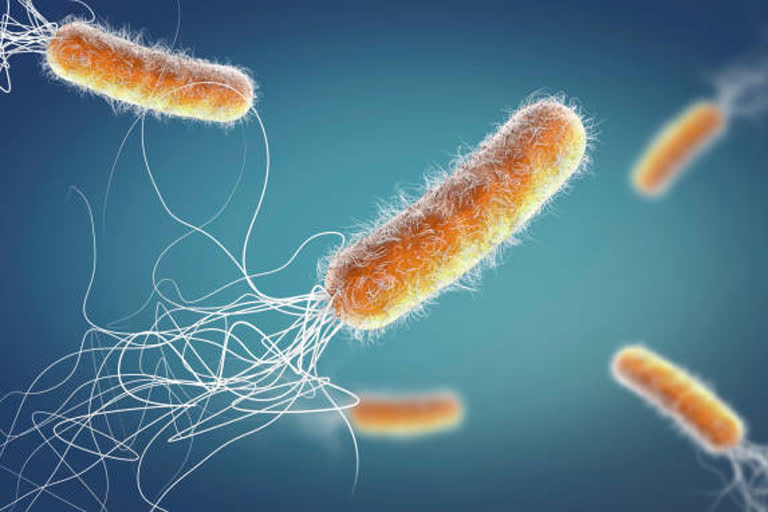New Delhi: Five bacteria types - E. coli, S. pneumoniae, K. pneumoniae, S. aureus and A. baumanii - caused nearly 6.8 lakh deaths in India in 2019, according to a study published in The Lancet journal. The analysis found that common bacterial infections were the second-leading cause of death in 2019, and were linked to one in eight deaths globally. There were 7.7 million (77 lakh) deaths in 2019 associated with 33 common bacterial infections, with five bacteria alone connected to more than half of all deaths, the researchers said. The deadliest bacterial pathogens and types of infection varied by location and age, they said.
In India, five bacteria - E. coli, S. pneumoniae, K. pneumoniae, S. aureus and A. baumanii - were found to be the deadliest, causing 6,78,846 (nearly 6.8 lakh) deaths in 2019 alone, the researchers found. E. Coli was the most deadly pathogen, claiming 1,57,082 (1.57 lakh) lives in India in 2019, according to the study.
Globally, bacterial infections were second only to ischemic heart disease as the leading cause of death in 2019, the analysis found, highlighting the need for reducing them as a global public health priority. Building stronger health systems with greater diagnostic laboratory capacity, implementing control measures, and optimising antibiotic use is crucial to lessen the burden of disease caused by common bacterial infections, the researchers said.
"These new data for the first time reveal the full extent of the global public health challenge posed by bacterial infections," said Christopher Murray, study co-author and Director of the Institute for Health Metrics and Evaluation (IHME) at the University of Washington's School of Medicine, US. "It is of utmost importance to put these results on the radar of global health initiatives so that a deeper dive into these deadly pathogens can be conducted and proper investments are made to slash the number of deaths and infections," Murray said in a statement.
Also read:No more burning or dumping, plastic pollution can be controlled via its 'DNA': Research
While many estimates exist for pathogens such as tuberculosis, malaria, and HIV, until now, estimates of the disease burden of bacterial pathogens were limited to a handful of specific pathogens and types of infection, or focused only on specific populations, the researchers said. More deaths were linked to two of the deadliest pathogens - S. aureus and E. coli - than HIV/AIDS (864,000 deaths) in 2019, they said.
The new study provides the first global estimates of mortality associated with 33 common bacterial pathogens and 11 major infection types - known as infectious syndromes - leading to death from sepsis. Estimates were produced for all ages and sexes across 204 countries and territories. Utilising data and methods from the Global Burden of Disease 2019 and Global Research on Antimicrobial Resistance (GRAM) studies, the researchers used 343 million individual records and pathogen isolates to estimate deaths associated with each pathogen and the type of infection responsible.
Of the estimated 13.7 million infection-related deaths that occurred in 2019, 7.7 million were associated with the 33 bacterial pathogens studied. Deaths associated with these bacteria accounted for 13.6 per cent of all global deaths, and more than half of all sepsis-related deaths, in 2019, according to the study. More than 75 per cent of the 7.7 million bacterial deaths occurred because of three syndromes:Llower Respiratory Infections (LRI), Bloodstream Infections (BSI), and peritoneal and Intra-Abdominal infections (IAA), the researchers found.
Five pathogens – S. aureus, E. coli, S. pneumoniae, K. pneumoniae, and P. aeruginosa – were responsible for 54.2 per cent of deaths among the bacteria studied, they said. The pathogen associated with the most deaths globally was S. aureus, with 1.1 million deaths. The study shows that sub-Saharan Africa recorded the highest mortality rate, with 230 deaths per 100,000 population.
By comparison, the high-income super-region – which includes countries in Western Europe, North America, and Australasia – recorded the lowest mortality rate, with 52 deaths per 100,000 population, it said. The pathogens associated with the most deaths differed by age. With 940,000 (9.4 lakh) deaths, S. aureus was associated with the most deaths in adults aged over 15 years, the researchers said. The most deaths in children aged 5 to 14 years were associated with Salmonella enterica serovar Typhi, with 49,000 deaths, they added. (PTI)
(This story has not been edited by ETV Bharat and is auto-generated from a syndicated feed.)
